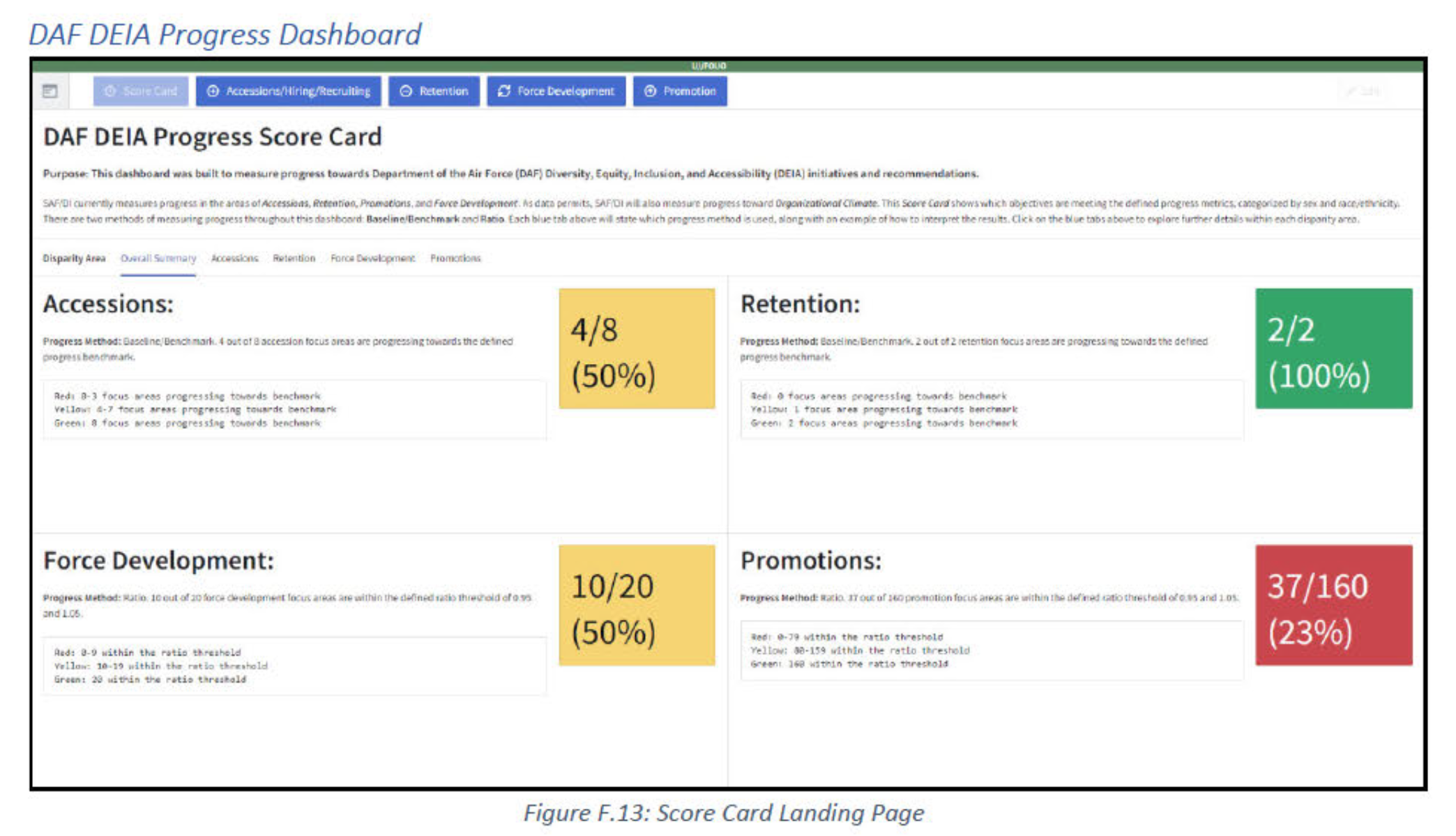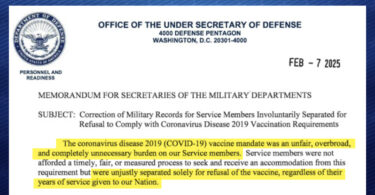By Micaela Burrow, The Daily Caller News Foundation
The Air Force is developing a system that tracks changes in the percentages of racial minorities and women who join and advance through the Air Force to evaluate whether the service is achieving its so-called Diversity, Equity Inclusion and Accessibility (DEIA) goals, according to documents obtained by the Daily Caller News Foundation.
A “DEIA Progress Dashboard” will be “highlighting and tracking [the Department of the Air Force’s] progress towards addressing racial, ethnic, and gender disparities,” according to a background paper included in records the DCNF obtained via a Freedom of Information Act request.
The tool helps users assess whether the Air Force is adhering to DEIA principles, generating a “score card” on each area of focus indicating how many disparity gaps are closing, according to the documents.
“The dashboard should be used … as a tool to drive meaningful discussion, reflection, and initiative generation centered around ground-truth facts,” the backgrounder, dated Feb. 28, 2023, states.
The dashboard enables analytics and analysis of year-over-year data to pinpoint specific areas among entrances, promotions, retention and other elements of the Air Force where disparities occur, according to the backgrounder.
The Air Force’s diversity office began work on the dashboard in an effort to increase “transparency and accountability” following the release in 2020 and 2021 of Racial Disparity Reviews, according to the documents. In categories of accessions, retention and career opportunities, women and racial-ethnic minority groups were often underrepresented, the reviews found.
“A disparity exists when the proportion of a racial-ethnic or gender group within a subset of a population is different from the proportion of the majority group subset” or the general Air Force population, according to the service’s Inspector General.
To break down movement toward reducing disparities, the DEIA dashboard tracks overall accessions and allows them to be broken down by different career types as well as undergraduate pilot training graduations by race, ethnicity and gender, the document shows.
Data also include Air Force professional military education completion rates and promotions, and the dashboard lets users see the relative demographics of enlisted leadership, officers and civilian personnel.
For example, it might contain a graph showing how the percentage of women who join the Air Force each year has changed, according to the backgrounder. Or, a user can click on the “promotions” tab and look at the race and sex of people promoted to the O-6 rank relative to all of those eligible to compete for the same promotion slots.
The dashboard “is a living product that will be continually enhanced with additional data sources as they become available to ensure that [the Air Force] has the most comprehensive view into quantifiable disparities possible,” according to the documents.
A second tool, called the Secretary of the Air Force Office of Diversity and Inclusion (SAF/DI) Demographics Dashboard, allows “highly customizable queries of the intersectionality between race, ethnicity, and sex” in various contexts, according to another, undated document among the records obtained by the DCNF.
But the document specified the demographics tool would be continually updated in response to feedback from users.
A second background paper said the dashboard was available only for internal use within the SAF/DI, but the office hoped to make it accessible for organizational leaders and DEIA professionals throughout the Air Force.
“The progress dashboard automates a process that many DAF leaders currently engage in: comparing current state to a targeted future state and using the difference identified to help guide decisions, but not replace decision making,” the document says.
However, it does not appear the dashboard has undergone significant developments since the February backgrounder was issued. As of the backgrounder’s publication, Version 1 of the dashboard was fully developed for release and contained data from 2019 to 2022.
The Air Force initially referred to the dashboard as a “barrier analysis tool” in a February DEIA newsletter obtained by the DCNF. Later, the Air Force said “barrier analysis” did not adequately reflect the product’s intended application.
“Upon a deeper thought and explanation, the ‘barrier analysis tool’ as described in the February 2023 SAF/DI DEIA Enterprise Update, was a mischaracterization of the development of such tool at the time of publication. The tool in reference is a progress dashboard which is under development and currently only utilized for internal SAF/DI use,” the office said in an Aug. 30 statement provided alongside the records.
The DEIA dashboard supplements the Workforce Analytics Dashboard, launched nearly a year ago in October, Air Force spokesperson Laurel Falls told the DCNF.
“This tool provides rapid information to answer queries from all levels across the DAF and empowers leaders to access baseline information regarding diversity,” she said.
A slide deck accompanied the documents with examples of the landing pages and displays for both the DEIA and demographics dashboards, but the Air Force blacked out frames on pages apparently depicting snapshots of the demographics comparisons and progress meters, citing privacy reasons.
The Air Force hopes to build on the two dashboards with machine learning tools to identify root causes of disparities, forecast future trends and model possible solutions, a slide briefing for the Air Force secretary included in the records shows.










Leave a Comment